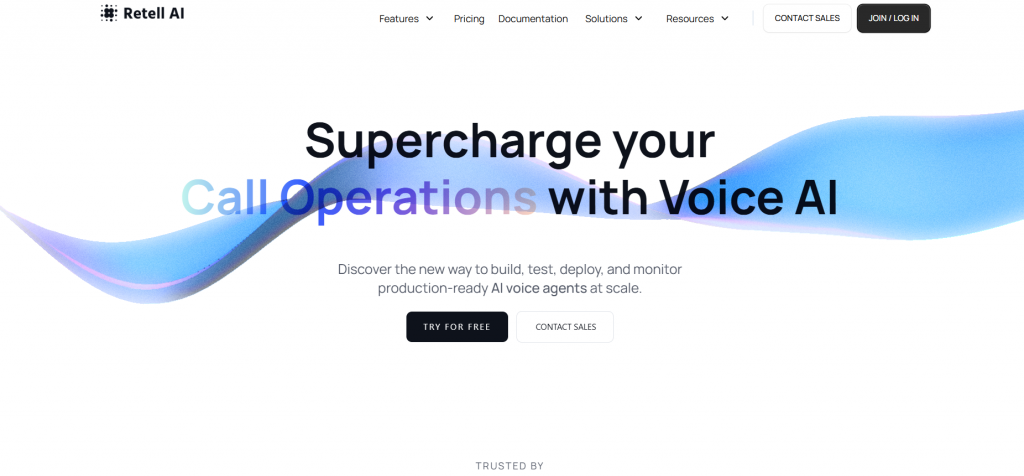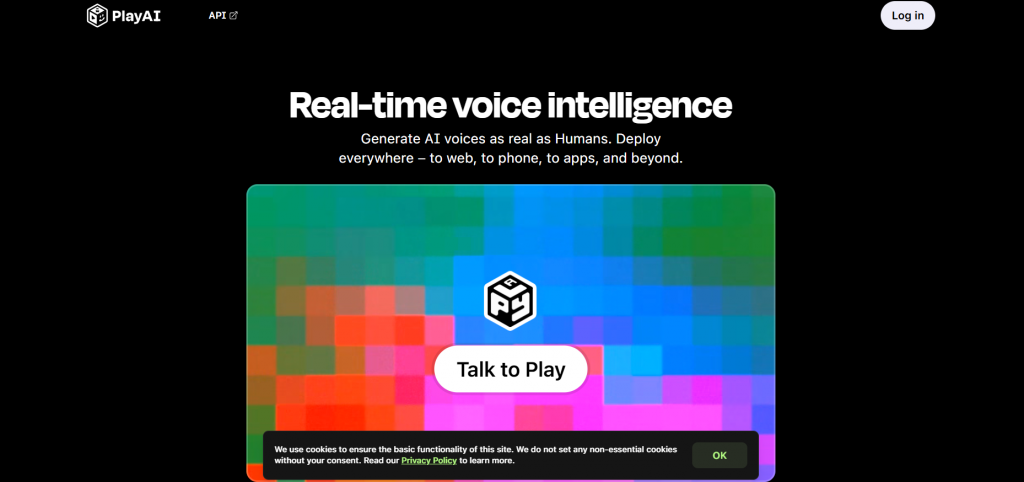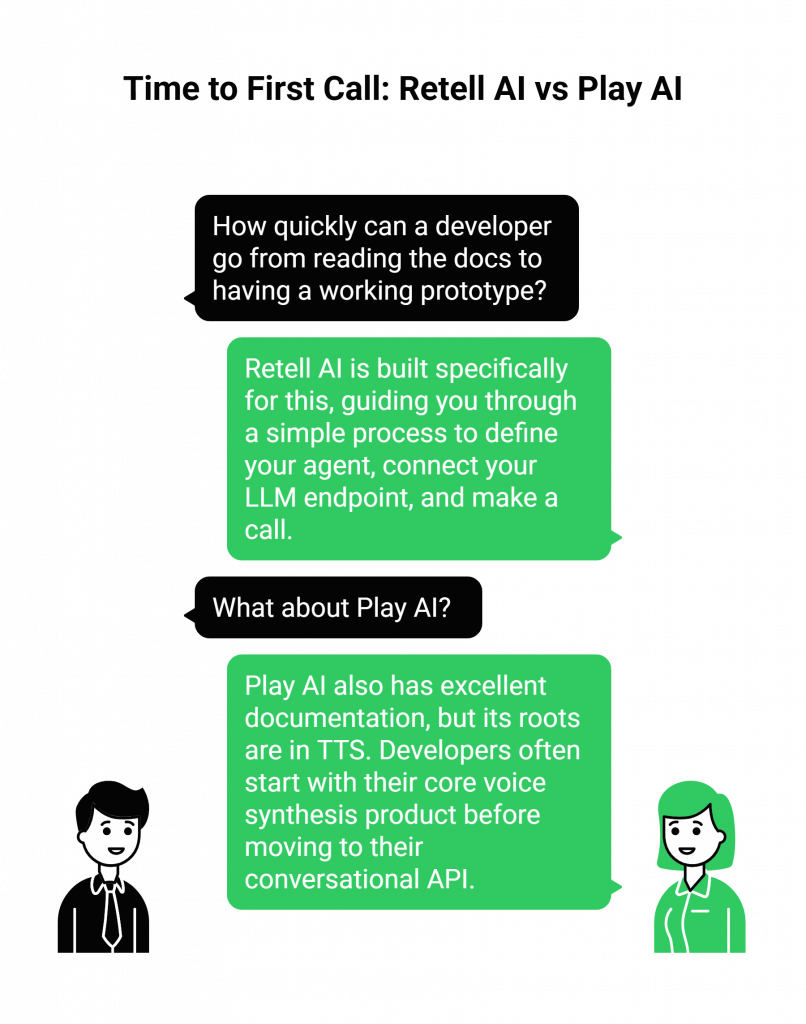For developers building voice AI, the ultimate goal is to create an agent that feels truly human. This is a massive challenge. A great voice agent needs to do two things perfectly: it must respond instantly without awkward pauses, and its voice must sound natural and engaging.
This creates a difficult choice for developers. Do you pick a tool that masters the lightning fast flow of conversation, or one that offers a stunningly realistic voice? This is the central question in the Retell AI vs Play AI debate.
Choosing the wrong platform can lead to a frustrating user experience. An agent that is slow to respond feels clunky and unintelligent, while a robotic voice can instantly break the illusion of talking to a helpful assistant.
As a developer, you need a platform that not only provides powerful features but also a smooth and intuitive development experience. This article will break down the Retell AI vs Play AI comparison from a developer’s point of view, helping you choose the best tool to bring your next voice project to life.
Table of contents
Understanding the Retell AI & Play AI
The most important thing to understand is that Retell AI and Play AI approach the challenge of voice AI from two very different angles. One is obsessed with the speed and dynamics of the conversation, while the other is obsessed with the quality and emotion of the voice itself.
What is Retell AI?
Retell AI is a platform designed for one primary purpose: to help developers build voice agents that can have incredibly fast, fluid, and natural conversations. They focus on solving the hardest engineering problem in voice AI: latency. Their entire system is built to minimize the delay between when a user stops speaking and the AI starts responding.

For Developers, Retell AI’s Key Strengths Are
- A Focus on Speed: They aim for a response time of around 500 milliseconds, which is fast enough to eliminate those awkward silences that plague many voice bots.
- Intelligent Conversation Handling: Their proprietary engine is designed to manage real-world conversational dynamics, like allowing users to interrupt the agent naturally.
- Developer First API and SDKs: They provide a simple, clean API and SDKs for popular languages like Python and TypeScript, making it easy to get an agent running quickly.
- LLM Agnostic: You can connect any Large Language Model you want to act as the brain of your agent.
Think of Retell AI as the master of conversational timing. It is the framework that ensures the back and forth of the dialogue is seamless and professional.
What is Play AI?
Play AI, widely known as Play.ht, comes from the world of high-end text-to-speech (TTS). Their core strength has always been producing some of the most realistic, expressive, and emotionally resonant AI voices on the market. They are the masters of voice quality. While they have expanded into conversational AI, their foundation and primary differentiator remain the stunning quality of their audio.

For Developers, Play AI’s Key Strengths Are
- Ultra Realistic Voices: Their TTS models can generate speech that is often indistinguishable from a human voice, complete with emotion and intonation.
- Voice Cloning: They offer powerful voice cloning capabilities, allowing you to create a unique voice for your brand or application.
- API for High Quality Speech: Their core product is a powerful API for generating high fidelity audio from text.
- Conversational Capabilities: They have built upon their world class TTS to offer a conversational API, aiming to bring that same level of voice quality to real time interactions.
Think of Play AI as the master voice actor. It is the platform that ensures every word your agent speaks is delivered with perfect clarity and emotion.
Also Read: Building Smarter Apps with VoIP Calling API Integration for Pipecat AI
Retell AI vs Play AI: A Developer Focused Comparison
To make a clear decision, developers need to look at how these platforms compare on key aspects of the development experience. This Retell AI vs Play AI breakdown highlights those differences.
| Feature | Retell AI | Play AI (Play.ht) |
| Primary Focus | Low-latency conversational flow and dynamics | High fidelity, realistic voice quality (TTS) |
| Ease of Setup | Very high; SDKs and a simple API to create and manage agents. | High; clear API documentation, especially for TTS generation. |
| API Design & SDKs | Agent-focused SDKs (TypeScript, Python) for fast integration. | REST API with helper libraries; strong focus on TTS endpoints. |
| Customization | LLM-agnostic. Lets you plug in your preferred language model easily. | LLM-agnostic, but its core value is its own proprietary TTS. |
| Key Differentiator | Sub-second response times and interruption handling. | Market leading voice realism, emotion, and clarity. |
The Development Experience: Time to First Call

For a developer, one of the most important metrics is how quickly you can go from reading the docs to having a working prototype.
- Retell AI is built specifically for this. Their documentation and SDKs guide you through a simple process: define your agent, connect your LLM endpoint, and make a call. The entire experience is optimized for building a conversational agent from the start.
- Play AI also has excellent documentation, but its roots are in TTS. A developer might start by using their API to generate audio clips. Moving to their conversational API is the next step, but the initial developer journey often begins with their core voice synthesis product.
This difference in focus is a key part of the Retell AI vs Play AI consideration.
Also Read: How Does VoIP Calling API Integration for LangChain AutoGen Microsoft Works?
Why is FreJun AI Different?
While comparing platforms like Retell AI and Play AI, which offer bundled solutions, it is important to understand the foundational layer that makes it all possible: the voice infrastructure. This is where FreJun AI operates. We are not an all-in-one conversational AI platform.
Instead, we provide the core telephony and real time audio streaming infrastructure. Our philosophy is, “We handle the complex voice infrastructure so you can focus on building your AI.”
For a developer who wants maximum control, you could use FreJun to manage the phone call and then plug in any STT, LLM, or even Play AI’s world class TTS to build your own custom voice stack from the best components available.
Real World Use Cases of Retell AI & Play AI
The best way to resolve the Retell AI vs Play AI dilemma is to think about your specific project’s primary goal.
When to Choose Retell AI
You should choose Retell AI when the speed and efficiency of the conversation are the most critical factors.
Use Cases of Retell AI
- High Volume Appointment Scheduling: An agent that needs to quickly get information like date, time, and service type without any delays.
- Real Time Lead Qualification: A sales agent that needs to have a fast paced, natural conversation to qualify a lead before passing them to a human.
- Intelligent IVR Systems: A support agent that needs to understand a customer’s problem and route them instantly without frustrating pauses.
In these scenarios, a slight delay can ruin the experience. The flow of the conversation is paramount, making Retell AI the ideal choice.
Also Read: How VoIP Calling API Integration for CrewAI Improves AI Agents?
When to Choose Play AI
You should choose Play AI when the quality, personality, and emotional impact of the voice are central to the user experience.
Use Cases of Play AI
- AI Companions or Storytellers: An agent where the user is meant to form a connection with the AI’s personality, which is conveyed through its voice.
- Brand Voice Assistants: A virtual assistant that acts as the voice of a luxury brand, where a premium, high-quality voice is non-negotiable.
- Interactive Audio Experiences: Applications for gaming or entertainment where the voice acting needs to be immersive and believable.
In these cases, a generic or slightly robotic voice would completely undermine the purpose of the application. The Retell AI vs Play AI decision here leans heavily toward voice quality.
Conclusion: The Right Tool for the Right Voice
In the end, there is no single winner in the Retell AI vs Play AI matchup. The “more developer-friendly” platform depends entirely on what you, the developer, are trying to build. They are both excellent tools that are friendly to developers, but they are optimized for different outcomes.
Choose Retell AI if your primary goal is a fast, fluid, and seamless conversation. Its developer experience is laser-focused on getting a low-latency, interruption-capable agent up and running as quickly as possible.
Choose Play AI if your primary goal is to deliver a breathtakingly realistic and emotionally engaging voice. Its API provides access to some of the best synthetic voices ever created.
By first defining the core of the user experience you want to create, speed or soul, you can confidently choose the right platform in the Retell AI vs Play AI comparison and build a truly next-generation voice agent.
Also Read: SIP Trunk Providers: How to Choose the Right One for Your Business
Frequently Asked Questions (FAQs)
Yes, both platforms are designed to be LLM agnostic, meaning you can connect them to models from providers like OpenAI, Anthropic, Google, or your own custom models.
Latency is the delay between when a user stops speaking and the AI agent begins to respond. High latency (anything over a second) creates awkward pauses that make the conversation feel unnatural and frustrating for the user
No, Retell AI is not a TTS provider itself. It is a conversational engine that integrates with various third-party TTS services to generate the agent’s voice.
It is unlikely. Play AI’s primary value proposition and core technology is its own world-class TTS engine. Their conversational API is built to showcase and deliver that specific feature.
